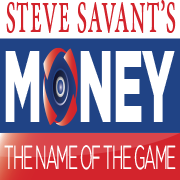 Mesa 4/17/2018 10:00:00 AM
Mesa 4/17/2018 10:00:00 AM
News / Finance
Getting Carded
You Graduate from College with Huge Student Loan Debt and then Immediately Receive Credit Cards in the Mail

As you become financially independent, credit is likely to play a bigger and more important role in your economic life than it has before. There’s a lot that credit can do for you. If you need money—especially in an emergency—and you don’t have the cash on hand, the immediate buying power of a credit card can be a lifesaver. And through longer-term arrangements like car loans and mortgages, credit makes it possible to pay for things you wouldn’t otherwise be able to afford.
As you become financially independent, credit is likely to play a bigger and more important role in your economic life than it has before. There’s a lot that credit can do for you. If you need money—especially in an emergency—and you don’t have the cash on hand, the immediate buying power of a credit card can be a lifesaver. And through longer-term arrangements like car loans and mortgages, credit makes it possible to pay for things you wouldn’t otherwise be able to afford.
The flip side of the buying power that credit gives you is that you’ve got to pay back the money you spend. As obvious as this might seem, it can be surprisingly easy to forget how much you’ve charged when it seems like you have free money at your fingertips.
In return for the privilege of using credit, you’re required to pay a finance charge. For credit cards, this means that interest, which is calculated as a percentage of the amount you owe, accumulates on any unpaid balance. For loans, the finance charge usually includes fees for the cost of arranging the credit, as well as the interest expense. The problem with finance charges is that you can end up paying consider- ably more than your purchase originally cost. And while many credit cards don’t impose a finance charge if you pay back the credit you’ve used within a certain period of time, most loans and some cards start charging from the moment you start spending.
When you shop for a loan, check the total cost. The principal, or amount you borrow, and the interest rate you pay are key factors. The term, or length of the loan, and the fees you pay matter too. A loan’s annual percentage rate (APR) gives you an accurate picture of what borrowing will cost you on a yearly basis. What you want is the lowest APR you can find.
Contributions from the book It’s Your Financial Life in this press release are used with permission from Light Bulb Press.
